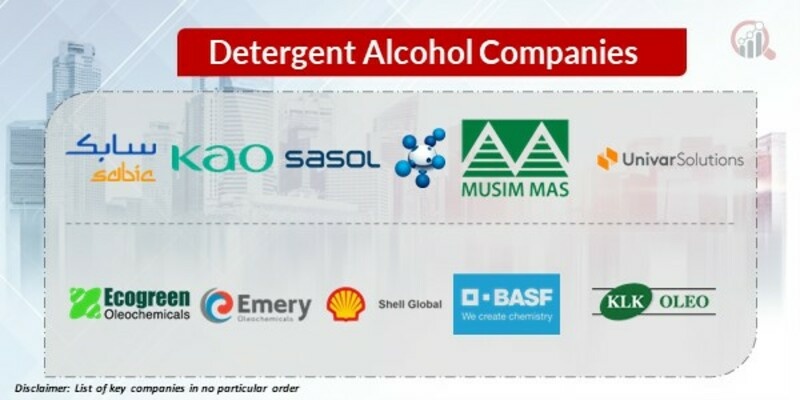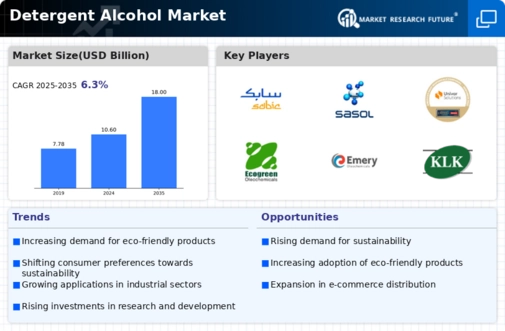Top Industry Leaders in the Detergent Alcohol Market

The detergent alcohol market is a dynamic and competitive space. It plays a crucial role in a diverse range of industries, from household cleaning to pharmaceuticals and personal care. Understanding the landscape, key players, and their strategies is essential for anyone navigating this market.
Market Share Factors:
Several factors influence market share in the detergent alcohol market:
- Product Type: The market is segmented by the type of alcohol used, including linear fatty alcohols (LAFs), fatty alcohol ethoxylates (FAEOs), and synthetic alcohols. LAFs hold the largest share due to their versatility and cost-effectiveness.
- Application: Detergent alcohols are used in various applications, including household detergents, industrial cleaners, personal care products, and pharmaceuticals. The growing demand for natural and eco-friendly products in personal care and pharmaceuticals is driving market growth.
- Region: The market is geographically diverse, with Asia Pacific leading the way due to its large and growing population and increasing demand for consumer goods. Europe and North America follow closely, but face stricter regulations on certain types of detergent alcohols.
- Price and Supply Chain: Fluctuations in raw material prices, particularly palm oil, can impact the price of detergent alcohols. Additionally, disruptions in the global supply chain can affect production and availability.
Competitive Strategies:
Major players in the market employ various strategies to gain market share and stay competitive:
- Product Innovation: Companies are constantly innovating to develop new types of detergent alcohols with improved performance, sustainability, and cost-effectiveness. Bio-based and readily biodegradable alcohols are gaining traction due to environmental concerns.
- Mergers and Acquisitions: Consolidation is a significant trend in the market, with major players acquiring smaller companies to expand their product portfolio and geographic reach. Recent examples include BASF's acquisition of Solvay's fatty alcohol business and Sasol's acquisition of Croda's Oleochemicals business.
- Vertical Integration: Some companies are integrating vertically to control the entire supply chain, from raw materials to finished products. This allows for better cost control and quality assurance.
- Marketing and Branding: Building strong brand recognition and focusing on specific customer segments are crucial for differentiation in a crowded market. Sustainability and environmental initiatives are increasingly used as marketing tools.
List of Key Players in the Detergent Alcohol Market
- SABIC (Saudi Arabia)
- Kao Corporation (Japan)
- SASOL (South Africa)
- Musim Mas Holdings (Singapore)
- Univar Inc. (US)
- Ecogreen Oleochemicals (Singapore)
- Emery Oleochemicals (Malaysia)
- Royal Dutch Shell PLC (Netherlands)
- BASF SE (Germany)
- KLK Oleo (Malaysia)
- Procter & Gamble (US)
- Godrej Industries Ltd (India)
- Wilmar International Ltd. (Singapore)
Recent Developments:
September 2023: Ecogreen Oleochemicals, a leading producer of bio-based detergent alcohols, secures a $50 million investment to expand its production facilities in North America.
October 2023: Price volatility continues: Detergent alcohol prices remain in flux, with regional variations due to fluctuating feedstock costs and supply chain disruptions.
November 2023: The U.S. Food and Drug Administration approves a new type of detergent alcohol for use in pharmaceuticals, opening up a new market segment for the industry.
December 2023: Global demand for detergent alcohols remains strong despite economic headwinds, driven by the essential nature of the product across various industries.









